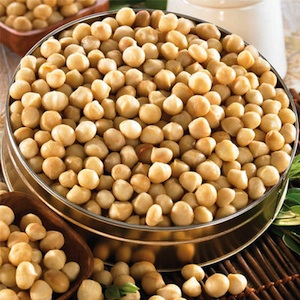 In support of our mantra to Eat Nutritious, Clean, Beautiful, and Delicious Food, we can add macadamia nuts to that list. No, not the chocolate-coated variety that come in souvenir tins from Hawaii, but the delicious ones we grow right here in Southern California in San Diego, Ventura, and Santa Barbara counties.
In support of our mantra to Eat Nutritious, Clean, Beautiful, and Delicious Food, we can add macadamia nuts to that list. No, not the chocolate-coated variety that come in souvenir tins from Hawaii, but the delicious ones we grow right here in Southern California in San Diego, Ventura, and Santa Barbara counties.
While macadamia nut trees originated in Australia, they were transported to Hawaii in the 1890s. At one time, the Hawaiian Islands produced 90% of the world’s supply. However, Hawaiian macadamia nut dominance is currently being challenged; Australia is increasing production while new orchards are being established in North and Central America, Brazil, Kenya, Indonesia, Taiwan, and southern Africa according to… (McHargue). While Hawaii and Central America produce the higher-fat Macadamia integrifolia cultivar, the Macadamia tetraphylla is better suited for growth in California. It’s also better suited for our tastes as they have a higher sugar content – they taste great raw instead of roasted.
I recently met up with Jim Russell, macadamia nut farmer and owner of Russell Family Farms in Fallbrook, at the Santa Monica Farmers Market. You can find his macs in bits and pieces, halves, and whole nuts at the Santa Monica Farmers’ Market during their peak season, October through March.
He explained that the macs, as he calls them, have an outer husk as well as a tough inner shell, making them hard to peel by hand. Because they taste good raw, much of his product is picked up wholesale by local raw food chefs and raw food companies and are hard to find at your regular super market. He explained that once the trees are established, their production peaks when the tree is 25 years old and continue for another 200 years or more. Because they are fairly resistant to disease, Russell uses no pesticides, herbicides, or fertilizer, except for a little horse manure from a neighbor. But macs do require a lot of water as they typically grow in subtropical climates. While irrigation costs may contribute to their higher cost versus other kind of tree nuts, it’s mostly a factor of current supply and demand that puts their price upwards of $9 per pound.
Creamy, sweet, and full of heart-healthy monounsaturated fats that help enhance good cholesterol (HDL), while helping to suppress bad cholesterol (LDL), macadamias are worth the extra cost. They also require some tender loving care; due to their high fat content, they should be stored in a cool dark place or refrigerated to extend shelf life.
Red Jen Ford is a Certified Holistic Health Coach, Yoga Instructor and Seasonal Eating Expert. Jen teaches the benefits and simplicity of eating local, sustainably grown food. Enjoy more of her dishes in her seasonal recipe booklets or online course, Simply in Season – Fall Recipes to Celebrate Healthy, Easy Seasonal Food. Redjenford.com
Red Jen Ford is a Certified Holistic Health Coach, Yoga Instructor and Seasonal Eating Expert. Jen teaches her clients the benefits and simplicity of eating local, sustainably grown food. Enjoy more of her dishes in her seasonal recipe booklets or her online course, Simply in Season: Recipes to Celebrate Healthy, Easy Seasonal Food.
